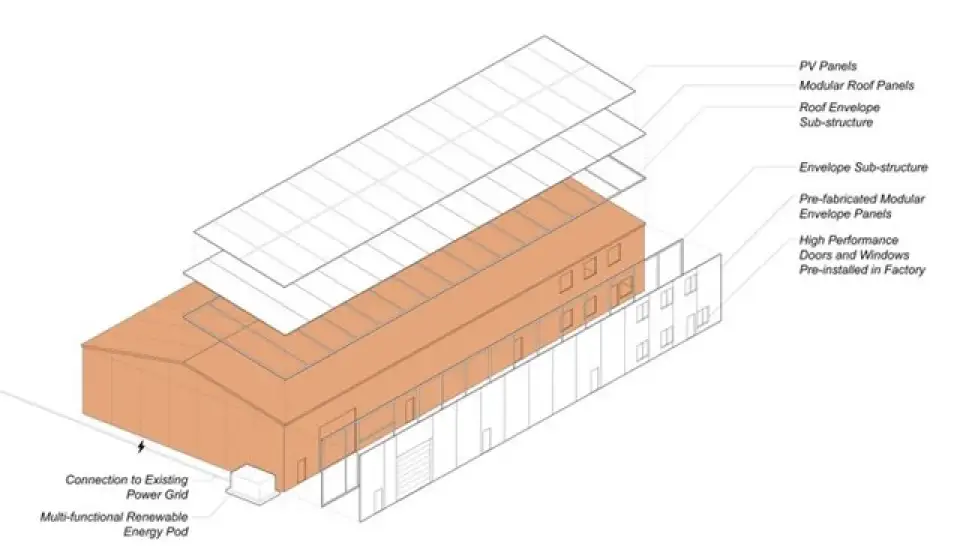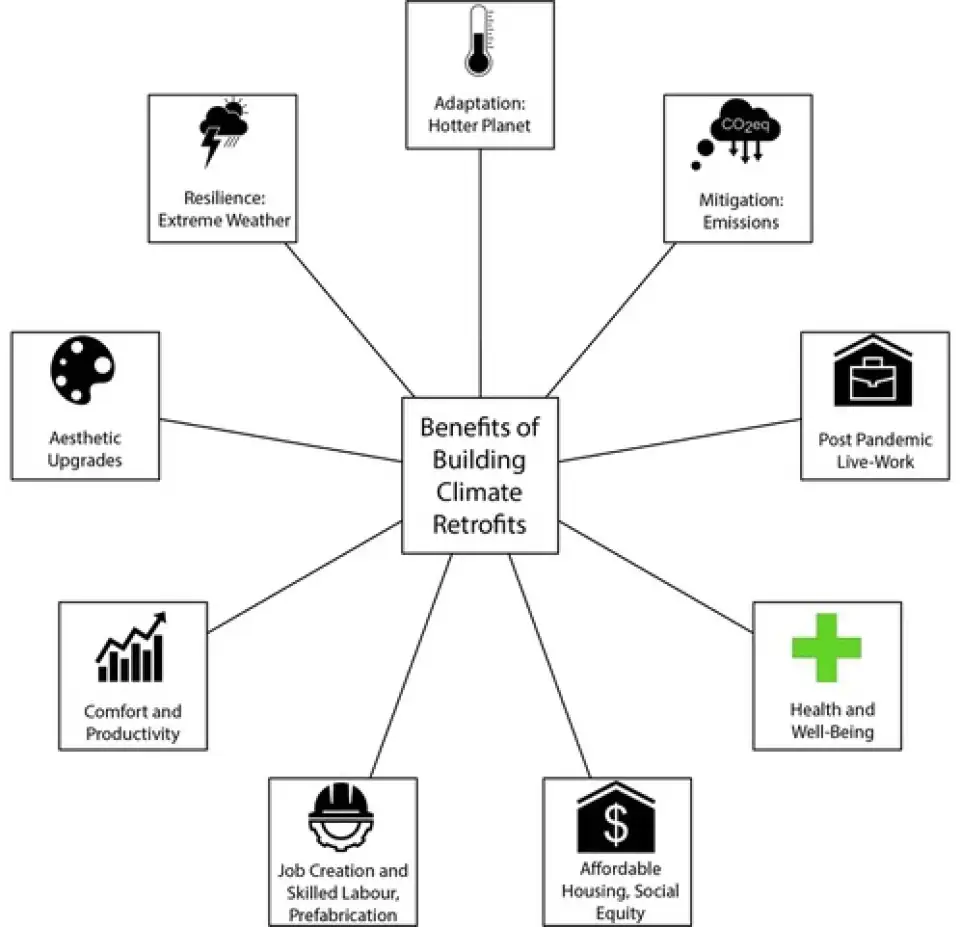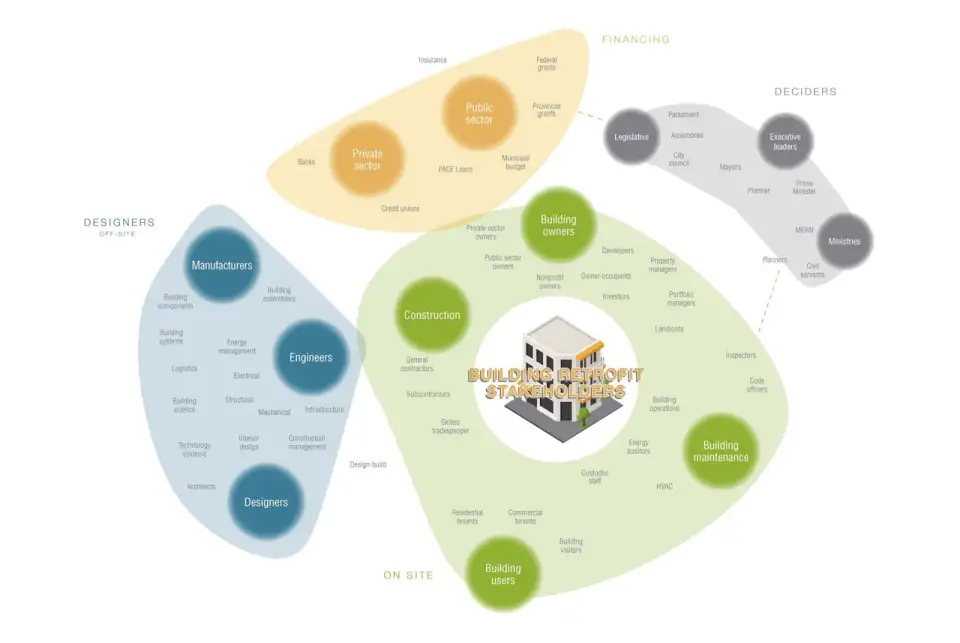
Michael Jemtrud, associate professor and chair in Architecture, Energy, and Environment at McGill University’s Peter Guo-hua Fu School of Architecture, is fired up about the urgency of gutting carbon emissions within the next eight years. “We need to talk about 2030,” he says, adding, ”2050 is just kicking the can down the road.” With that mission ever-present, Jemtrud is leading ReCONstruct, an initiative designed to spur rapid scaling of retrofits in Quebec and create more resilient communities. “Because of the urgency we are working on multiple research streams simultaneously,” Jemtrud explains. He has assembled an interdisciplinary team of researchers and public and private sector partners to identify effective strategies for reducing building emissions that industry can feasibly implement. The initiative has garnered support from Hydro-Québec and the Quebec Ministry of Energy and Natural Resources.
The multiple research tracks are harnessing architecture, engineering, and computer science—among other skill sets—to implement turn-key, scalable solutions for mass retrofits. The core effort involves developing a digital platform that will streamline the assessment of candidate buildings and the optimization of design and implementation solutions. “We are choosing to focus on buildings that have the highest impact in terms of community resilience and those that expedite industry capacity building due to their repeatability,” says Jemtrud. The community center in Île Bizard, a neighborhood within Montreal, fits the bill. It’s a steel structure insulated with SIPs, and thousands of similarly constructed buildings dot the Canadian landscape.
Another highly prevalent building type is the 1950s- and 60s-era school building constructed with a concrete superstructure. Starting with a typical school in the Pointe-Claire municipality of Montreal, his team is working to identify retrofit solutions for this typology, including analyzing the hygrothermal implications of adding exterior insulation panels. These buildings are community assets that could be used as refuges during extreme weather events, once they have been renovated to deliver a higher level of energy efficiency and thermal performance.

In building a digital platform, his team is working to acquire and organize the data required to assess which of these buildings across the province are the best candidates for retrofits, partly building off of databases already created by Natural Resources Canada (NRCan), and then aggregating the most similar candidates to demonstrate the market potential to panel manufacturers. Simultaneously, Jemtrud and his team are in discussions with prefabricators about retrofit solutions that can be scaled quickly.
Jemtrud is quick to point out that any retrofit solutions have to balance operational carbon savings with the embodied carbon being expended to achieve those savings. In Quebec the electrical grid is almost exclusively supplied by hydropower. Cutting electrical use in buildings is critically important for grid stability, peak load management, and for redirecting capacity to electrifying industry and transportation. Still, with such a clean energy supply, the embodied carbon impacts of building retrofits loom large. Part of his research efforts include developing an accounting tool—a lifecycle analysis tool on steroids, as Jemtrud says—to balance retrofits’ costs and the full spectrum of their nonenergy benefits, including health, productivity, and resilience. “We are trying to give relative value to those societal benefits within the platform we are developing,” he explains, “because we have to invest in retrofits not just for their ROI on energy. Retrofits are more of an ethos than a technical endeavor; they are about equity and health and have short- and long-term consequences.”

In the immediate term Jemtrud is planning to submit retrofit designs for a community center by the fall and hopes to have convinced one or several of the prefabricating companies to participate in developing a solutions package. He sees a very large market potential for this sector. “To do mass scale, we need 80 or more factories,” he says, only partly joking. Quickly building up capacity—factory investment, supply chain expansion, skilled labor, and so on—is a huge concern for him, and likely will impact the performance targets set for the initial retrofits. “Energy efficiency improvements may be lower, but, if a solution can be more readily systematized and repeated to build capacity in order to take on other types of building stock, it is worth it in the immediate term,” he notes, adding, “With that said, I expect the reduction target for the community center to be 80% since the envelope is so minimal.” Many community centers are in dire need of refurbishment and there is public money allocated to their repairs, making this typology in Jemtrud’s words: “a leverage point that can drive overall system transformation.“

Canada has seen an uptick in large-scale building retrofit activities in recent years. The Canada Infrastructure Bank has committed to investing up to $100 million for retrofits of commercial, industrial and multi-unit residential buildings in Quebec alone, with further retrofit investments pledged in other provinces. Several other industrializing retrofits programs are making headway across the country. Jemtrud’s team is in regular communication with leaders from the British Columbia-based Pembina Institute’s Reframed Initiative, the ReCover initiative in Nova Scotia, and NRCan’s PEER program, among others.